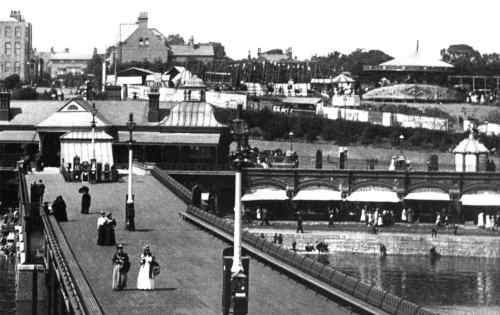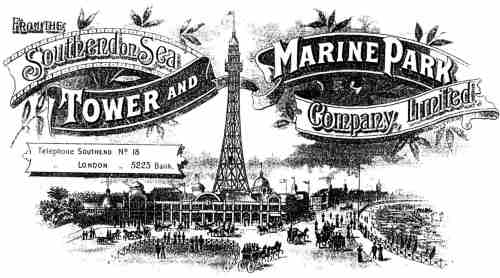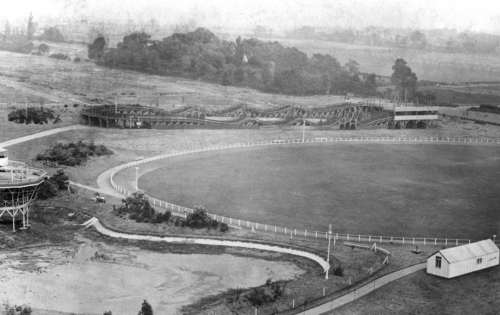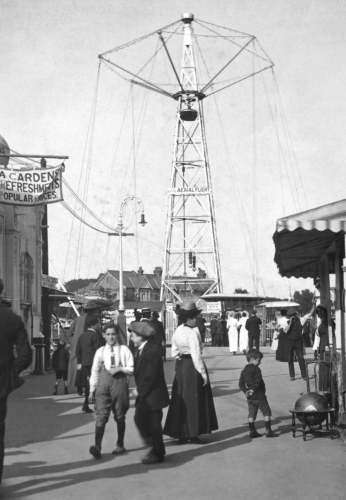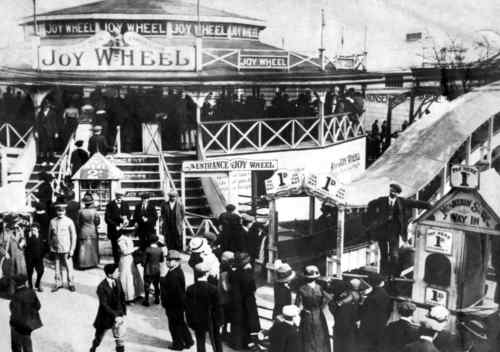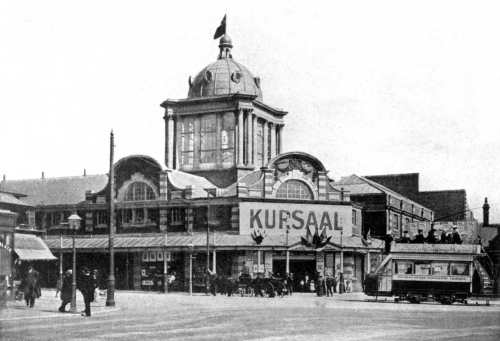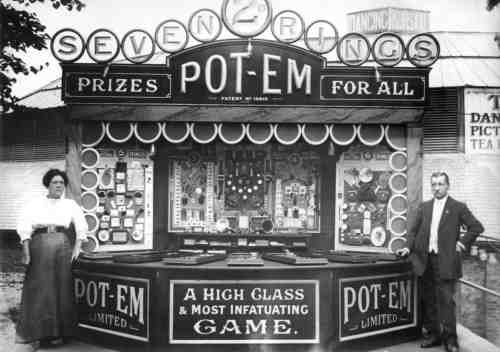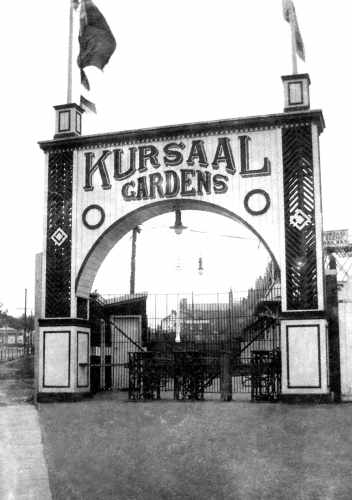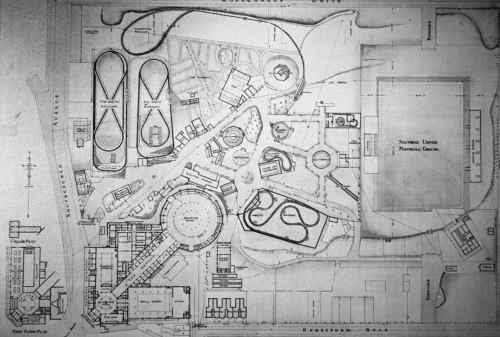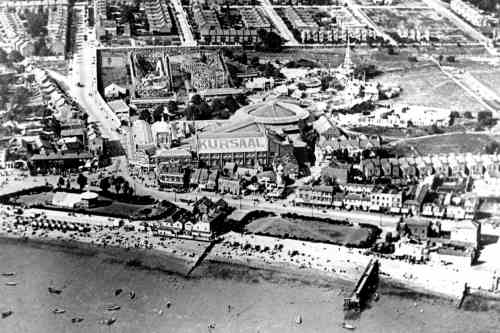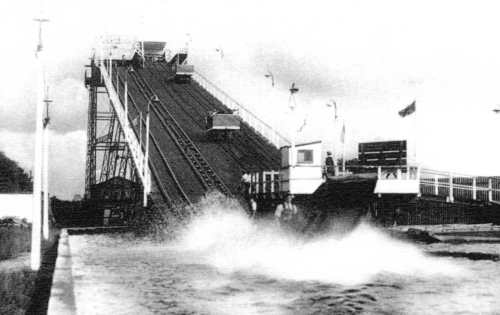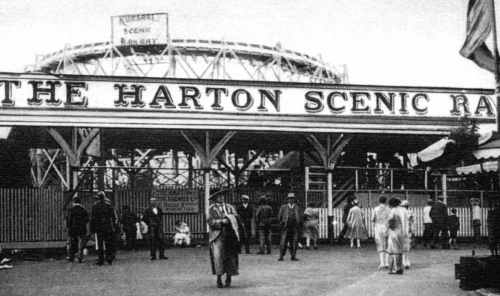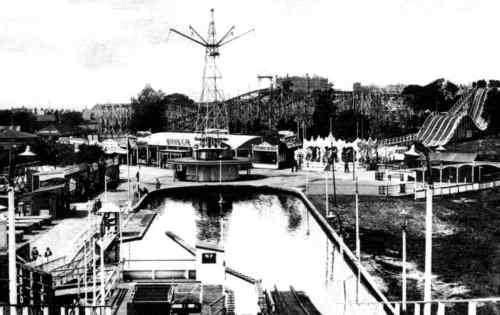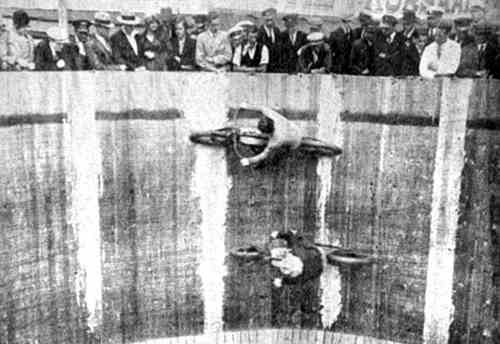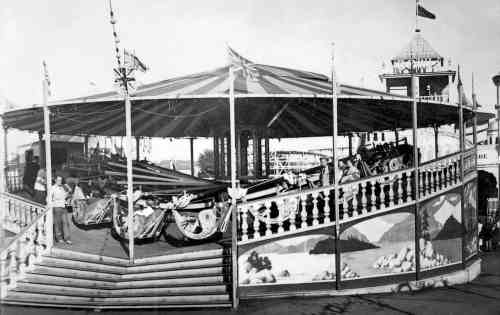|
|
|
|
HOME ARTICLES GALLERIES ABOUT US FORUM LINKS CONTACT JOYLAND BOOKS |
|
|
|
|
|
'One Bright Spot' and 'By the Dome it’s Known' were bywords for the Kursaal, certainly in Southend, in the East End of London and throughout much of southern England. The Kursaal was the largest amusement park in the south throughout much of the Twentieth Century and the destination for thousands of East Enders and others up to the 1960s. This photo gallery tells the story of the Kursaal: from its origins in the late nineteenth century, to the closure of the park and gardens in the 1970s, and the closure of the buildings in the 1980s, and then finally to the high profile re-opening of the ‘new’ Kursaal in 1998. This photo gallery takes visitors on a tour of this wonderland by the sea through the years and is based on a new book by top local author Ken Crowe. If you enjoy the Exhibition then why not buy Kursaal Memories here at Joyland Books and discover many more pictures plus the fascinating story of one of the world's first theme parks. |
|
|
In
the Beginning
|
George Sherrin’s drawing for the proposed Tower buildings, as the grand entrance to the Marine Park. It was only when the company responsible was renamed the Southend and Margate Kursaals Company, did the buildings become called the Kursaal. |
|
|
|
|
Grand openings and big crowds
|
The trotting tack was completed in 1905, and was one of the earliest attractions, together with the switchback railway, aerial flight, dancing platform and “swanneries”.
The Aerial Flight was among the earliest attractions in the Park, dating from 1894. It was also one of the longest surviving of the early rides, being a feature into the 1930s.
A general view of the Kursaal grounds taken about 1910. One of the principal attractions at this time was the Joy Wheel, introduced by the new owners, the Luna Park Company.
A view of the Kursaal about 1910. |
|
|
|
|
The first C.J. Morehouse
|
Among the many side shows and stalls that were such a feature of the Marine Park and Kursaal was the Pot-Em stall, seen here probably shortly before the First World War.
Although the main entrance to the Kursaal was via the “vestibule” below George Sherrin’s dome, there was also a separate entrance to the “Gardens”.
A plan of the Kursaal grounds in 1920.
|
|
|
|
|
The David de Forest Morehouse Years (1921-1934)
|
One
of the most famous of all the attractions in the Kursaal was the
Water Chute. It was introduced in 1921, having been brought
directly from Earls Court. It was one of the few rides in the
grounds for which there was always a queue.
A view from the
top of the old water chute, taken about 1930. In the middle is the
Aerial Flight, dating from 1894. To the right is the “Ice
Toboggan”.
The Mont Blanc ride was introduced in the 1930s by the Lecorgne family, and proved to be one of the favourites in the Kursaal Gardens. |
|
|
|
|
THEMAGICEYE | Terms and Conditions | Privacy Policy | Contact Us |
|

